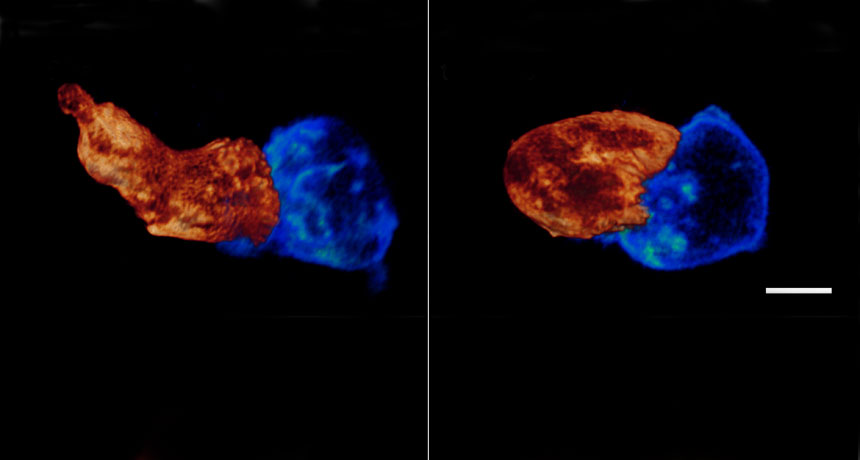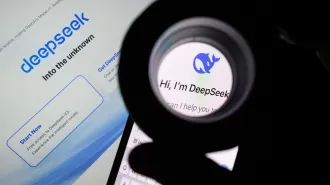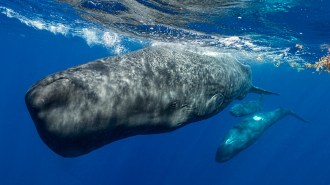New microscope gives clear view inside cells
Fluorescence technique dials back damage by splitting beams of light

SPYING ON CELLS An immune cell bearing a fluorescent orange tag reaches out and touches another cell (tagged in blue). Scientists can watch the action using a new microscope that’s not as damaging to cells as previous scopes. The scale bar represents 4 micrometers.
Betzig Lab/HHMI





